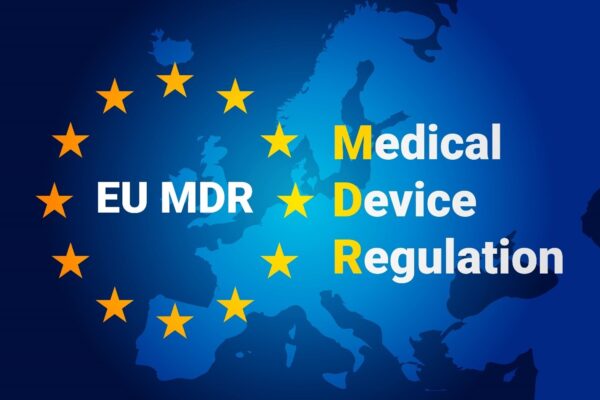The European Union Medical Device Regulation (EU MDR) has introduced sweeping changes to the medical device industry, impacting manufacturers of all sizes. For startups and small manufacturers, the regulation has posed both significant challenges and unique opportunities. These businesses, often characterized by innovative approaches and limited resources, must navigate an increasingly complex regulatory landscape to bring their products to market. Patrick John Gora emphasizes that understanding the implications of EU MDR and adopting strategies to meet its requirements is critical for their success.
What is EU MDR?
The EU MDR, officially known as Regulation (EU) 2017/745, came into full effect in May 2021, replacing the previous Medical Device Directive (MDD). It was designed to enhance patient safety and modernize medical device regulations by tightening requirements for market approval, post-market surveillance, and traceability. The regulation applies to all medical devices sold in the EU, covering everything from simple bandages to complex implants and diagnostic equipment.
Key features of the EU MDR include:
- More stringent classification rules: Devices are classified based on risk, and many have been reclassified to higher-risk categories.
- Enhanced clinical evaluation requirements: Manufacturers must provide robust clinical evidence to demonstrate device safety and performance.
- Unique Device Identification (UDI): A system for traceability throughout the device’s lifecycle.
- Post-market surveillance: Mandatory plans to monitor device safety and performance after market entry.
- Transparency: A publicly accessible database (EUDAMED) for device information, clinical investigations, and certifications.
Challenges for Startups
Small manufacturers and startups often face unique challenges under the EU MDR. Unlike established players, they may lack the financial resources, regulatory expertise, and infrastructure to adapt quickly to new requirements.
- Resource Constraints Startups operate on limited budgets and lean teams. The increased costs associated with compliance—such as hiring regulatory consultants, conducting clinical studies, and implementing UDI systems—can strain finances. For many, these costs represent a significant portion of their operating budget, threatening the viability of their innovations.
- Complexity of Compliance Navigating the intricacies of the EU MDR is no small feat. Startups must familiarize themselves with the classification rules, prepare technical documentation, and implement robust quality management systems (QMS). For companies without prior experience in regulated markets, the learning curve is steep.
- Extended Time to Market The time required to obtain regulatory approval has increased under the EU MDR. The need for additional clinical evidence and rigorous reviews can delay product launches, putting startups at risk of losing first-mover advantages or investor confidence.
- Limited Access to Notified Bodies Notified Bodies, the organizations responsible for assessing device compliance, have faced significant demand under the new regulation. Startups often struggle to secure timely assessments, further delaying market entry. Additionally, some Notified Bodies have withdrawn from the industry, reducing available options.
Opportunities for Startups
Despite these challenges, the EU MDR also offers opportunities for startups willing to embrace its framework. By prioritizing compliance early, startups can build trust with regulators, investors, and customers, creating a competitive edge.
- Enhanced Market Credibility Meeting EU MDR requirements signals a commitment to quality and safety. Startups that achieve certification can gain credibility with healthcare providers and patients, setting themselves apart in an industry where trust is paramount.
- Encouragement of Innovation While compliance is demanding, the EU MDR emphasizes high-quality innovation. Startups focused on developing genuinely groundbreaking devices may find the regulation rewarding, as it encourages thorough validation of novel technologies.
- Access to a Unified Market The EU MDR streamlines regulations across EU member states, offering startups a unified market for their devices. Successfully navigating this framework can pave the way for international expansion, as compliance with EU MDR is often recognized as a benchmark globally.
Strategies for Navigating EU MDR
To succeed under the EU MDR, startups need a proactive and strategic approach. Below are some best practices for navigating the regulatory landscape:
- Early Planning Begin regulatory planning in the early stages of product development. Design devices with compliance in mind, integrating regulatory considerations into every phase of the product lifecycle.
- Invest in Expertise Hiring or consulting with regulatory experts can save startups time and resources in the long run. Experienced professionals can guide companies through classification, documentation, and certification processes.
- Leverage Technology Regulatory technology solutions can help startups manage documentation, traceability, and compliance processes more efficiently. Cloud-based QMS platforms, for example, simplify the maintenance of quality records and ensure alignment with regulatory standards.
- Build Strong Partnerships Collaborating with Notified Bodies and industry stakeholders can help startups navigate regulatory hurdles more effectively. Establishing relationships with these entities early can improve access and streamline the approval process.
- Embrace Agile Compliance Regulatory landscapes evolve, and startups must remain adaptable. Establish systems for ongoing compliance monitoring, incorporating changes to standards or guidance into business practices.
The EU MDR has undoubtedly raised the bar for medical device regulation, creating significant hurdles for startups and small manufacturers. However, those that rise to the challenge and adapt to the regulatory environment stand to benefit from enhanced credibility, market access, and opportunities for growth. By embracing a culture of compliance and innovation, startups can navigate the complexities of EU MDR and thrive in the competitive medical device industry. For small manufacturers, success lies in viewing the EU MDR not just as an obstacle, but as an opportunity to establish themselves as leaders in quality and safety.
